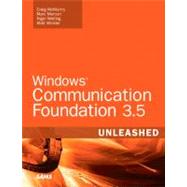
What is included with this book?
Matt Winkler is a senior Program Manager in Microsoft’s Connected Systems Division, where he focuses on building the visual designer for WF. Previously he was the Technical Evangelist for WF, focusing on driving adoption among software developers around the world. Based in Redmond, Matt spends his non-work time reading more tech books and chasing around his two children.
| Introducing the Windows Communication Foundation | |
| Prerequisites | p. 9 |
| Partial Types | p. 9 |
| Generics | p. 10 |
| Nullable Value Types | p. 13 |
| The Lightweight Transaction Manager | p. 14 |
| Role Providers | p. 16 |
| Summary | p. 18 |
| References | p. 19 |
| The Fundamentals | p. 21 |
| Background | p. 21 |
| Enter Services | p. 24 |
| Windows Communication Foundation | p. 26 |
| The Service Model | p. 28 |
| A Software Resource | p. 34 |
| Building a Service for Accessing the Resource | p. 36 |
| Using the Service | p. 55 |
| Hosting the Service in IIS | p. 67 |
| Changing How the Service Communicates | p. 72 |
| Visual Studio 2008 Tool Support | p. 75 |
| Summary | p. 82 |
| References | p. 83 |
| Data Representation and Durable Services | p. 85 |
| Background | p. 85 |
| The XmlSerializer and the DataContractSerializer | p. 87 |
| The XML Fetish | p. 91 |
| Table of Contents provided by Publisher. All Rights Reserved. |
The New copy of this book will include any supplemental materials advertised. Please check the title of the book to determine if it should include any access cards, study guides, lab manuals, CDs, etc.
The Used, Rental and eBook copies of this book are not guaranteed to include any supplemental materials. Typically, only the book itself is included. This is true even if the title states it includes any access cards, study guides, lab manuals, CDs, etc.